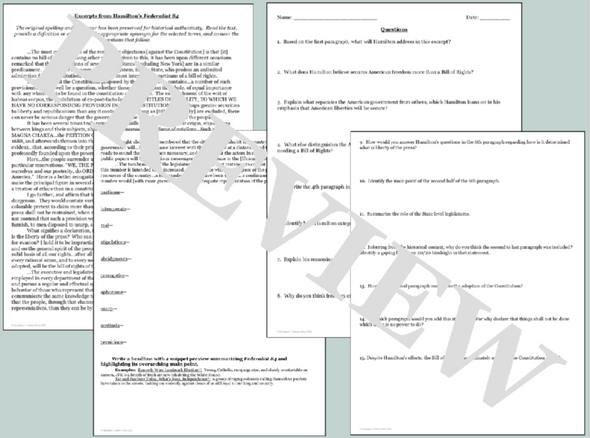Description
Everybody “knows” that the Courts have the power to declare any law passed by Congress “unconstitutional,” but where did that power come from? The Constitution itself is silent on the matter, and several founding fathers, including Jefferson, argued that this power resided in the Legislative Branch, rather than the Judiciary.
That question remained unanswered for the first 15 years of the new Republic until Justice John Marshall’s opinion in the 1803 case of Marbury v. Madison, which established the principle of Judicial Review (much to Jefferson’s chagrin). Marshall’s opinion and rationale did not come out of thin air, however; much of the logical underpinning of his ruling had already been written about by another founding father – Alexander Hamilton – in Federalist #78. Hamilton’s logic, in fact, found its way into much of the Court’s decision (and, indeed, remains the most often cited Federalist paper by the Supreme Court to this day).
In this activity students will read and analyze excerpts from the Court’s opinion in Marbury v. Madison along with excerpts from Hamilton’s arguments made in Federalist #78, answer questions which focus their attention on the main arguments made by the Court and Hamilton, and discuss the ideological and legal bases for those arguments and the Court’s Opinion.
Materials include:
*teacher’s instructions;
*excerpts from the majority opinion in Marbury v. Madison and Hamilton’s Federalist #78;
*guided question worksheets;
*answer guide with suggested answers to the guided questions.
Materials are provided as word documents and PDFs in one zip file.
I’ve used this activity with my 8th grade class for years, and it never fails to engage and interest students.











